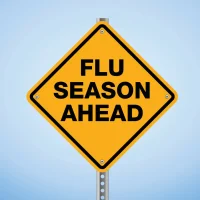A recent study published in The Lancet Regional Health – Western Pacific have analysed the pandemic response in Taiwan and outlined a list of recommendations to public health authorities around the world.
You might also like: Where Are the Most Effective Anti-COVID-19 Strategies?
Taiwan, a high-income jurisdiction, has lately received much attention for its effective strategies in controlling the COVID-19 contagion. Notably, as early as April 2020, Taiwan was able to eliminate local transmission (no confirmed cases in the community) and recorded only 0.3 deaths per million people by end-August 2020.
Taiwan's extensive health infrastructure established before COVID-19, including integrated manual and digital solutions to support close coordination of relevant agencies, enabled a timely and effective pandemic response – i.e. no lockdown needed.
Researchers have taken a closer look at the ‘Taiwanese model’ of infection control (Summers et al. 2020). Taking some important lessons from Taiwan's approach, the researchers provide a list of recommendations to "inform the response to the current COVID-19 pandemic" as well as prepare for the next pandemic.
- Establish or strengthen a dedicated national public health agency (e.g. a centre for disease control and prevention) for managing and controlling pandemics and other public health threats. This agency would require the authority to coordinate other departments (such as Taiwan's Central Epidemic Command Center, or CECC).
- Formulate a generic pandemic plan that allows for responses to different disease agents with diverse characteristics.
- Provide further investment in
resources and infrastructure to enable a government to quickly respond to
future disease threats. This includes the development of the following:
- national and regional disease and outbreak surveillance systems (similar to Taiwan's national alert system)- effective border management policies and associated infrastructure that can be implemented quickly (Taiwan mandated air passenger health screening immediately after outbreak notification in December 2019)
- more robust quarantining rules and more secure facilities for incoming travellers
- conventional and digital solutions to contact tracing, and isolation/quarantine monitoring
- effective methods of face mask distribution and promotion in case a border control failure occurs (Taiwan has a name-based mask distribution system). This approach could also be applied and extended to medicine distribution for a future pandemic (e.g. for antivirals).
- Review workforce needs to support effective pandemic management and public health development more generally and enhance training programmes accordingly. One outcome could be establishment of a Field Epidemiology Training Programme (FETP) in countries which do not currently have one.
- Develop systems for evaluating and auditing pandemic responses, and exercising emerging infectious disease response capabilities. Pandemic response systems can be tested by running regular exercises and simulations. Recommendations arising from these initiatives must be properly communicated and implemented.
- Establish cultural, societal and legal acceptability for these pandemic response measures. For example, use of digital solutions in contact tracing can spark concerns about data privacy, while cultural norms may mean less acceptability in some countries for wearing face mask in public. Public health law needs to be updated to enable outbreak and pandemic control measures while balancing the needs to protect personal rights and liberties.
Image credit: ipopba
via iStock
References:
Summers J et al. (2020) Potential lessons from the Taiwan and New Zealand health responses to the COVID-19 pandemic. The Lancet Regional Health – Western Pacific. Published online 21 October. https://doi.org/10.1016/j.lanwpc.2020.100044


![Tuberculosis Diagnostics: The Promise of [18F]FDT PET Imaging Tuberculosis Diagnostics: The Promise of [18F]FDT PET Imaging](https://res.cloudinary.com/healthmanagement-org/image/upload/c_thumb,f_auto,fl_lossy,h_184,q_90,w_500/v1721132076/cw/00127782_cw_image_wi_88cc5f34b1423cec414436d2748b40ce.webp)







